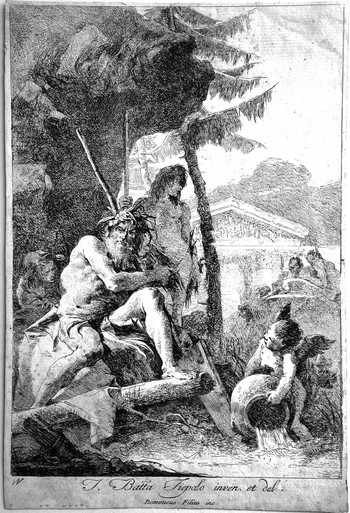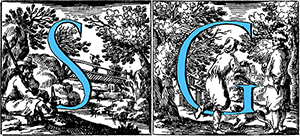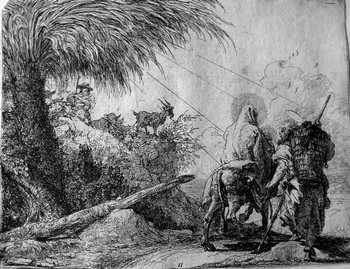
TIEPOLO Giandomenico
(Venice 1726 – 1804)
Venetian painter and engraver son of Giambattista, a famous painter and engraver, and Maria Cecilia Guardi, sister of the vedutist painter Francesco Guardi.
At the age of 13 he became part of his father’s workshop and at the age of 19 he was commissioned to paint the series of Stations of the Cross in the Oratory of the Crucifix of the Church of San Polo, reproduced later in fourteen etched sheets between 1748 and 1749. From 1750 to 1753 he stayed in Würzburg, in Bavaria, to collaborate with his father on the decorations of the residence of prince-bishop Carlo Filippo von Greiffenklau.
For the prince-bishop he has relized and dedicated the series of twenty-four etchings of his invention entitled Pictorial Ideas over the Flight into Egypt of Jesus, Mary and Joseph. From the paternal drawings he etched a series of sixty small portraits called Collection of Heads made around 1757 and published between 1773 and 1774. In 1754-55 he painted frescoes in the monastery of Saints Faustino and Giovita in Brescia, probably on a project by his father Giambattista.
In 1757 he worked with his father on the decorations of Villa Valmarana in Vicenza and began to express his own artistic taste and inspiration, more modern and less tied to paternal models.
In 1761 he frescoed, with his father, the rooms of the Villa Pisani in Stra. In 1762 he and his father were called in Madrid by the King of Spain Charles III, to paint the “Glory of Spain” at the Royal Palace, and the Stations of the Cross for the church of San Filippo Neri.
When his father died in 1770, Giandomenico returned to Venice, leaving his brother Lorenzo in Madrid.
In 1789 he frescoed the Palazzo Contarini in Venice, again with themes and style acquired by his father.
Three years later he returned to Zianigo where he decorated the family villa with the frescoes now transferred to the Cà Rezzonico palace in Venice. In this period he focused himself on engraving and drawing. He portrayed themes of daily life in a grotesque way, fanciful events of satyrs, light-hearted and ironic subjects and the mask of Pulcinella, protagonist of paintings and sheets of the album “Fun for boys”.
His graphic sign has less light than the paternal one, but it is more varied and closer to Rembrandt’s lesson, and above all in the rendering of the landscapes he shows a quick and lively inventiveness.
He spent the last years in the house of Zianigo where he continued to decorate, leaving an extraordinary pictorial testament. Giandomenico died in Venice in 1804.



